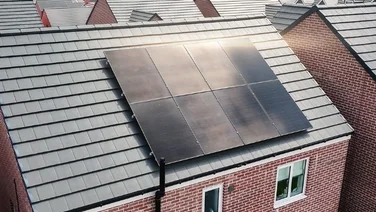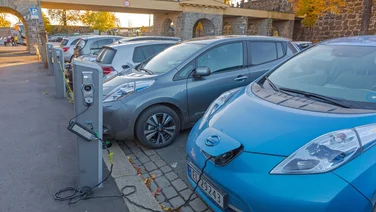- The UK is committed to net zero by 2050
- Widespread adoption of green tech will increase demand for electricity
- The costs of upgrading could be up to £110 billion of additional investment
- If changes are made now, the UK could still hit its targets

The UK government will have to make largescale changes to the national energy infrastructure – particularly the National Grid – if it is going to meet its target of being net zero by 2050, according to energy and financial experts.
The country’s net zero goals are reachable, but hitting them will require working with private energy providers to make investments and changes that are far reaching but don’t pass on the price increase to consumers.
The government will also have to prioritise the local distribution networks that take power to people’s homes.
The state of the (national) grid
What you might think of as the “national grid” is more of a patchwork of private companies, managing energy transmission and/or local distribution in different parts of the UK. National Grid is a FTSE-100 company that also operates in the United States. It owns the high-voltage electricity transmission network in England and Wales, and is also the UK’s largest energy supplier (or electricity distribution network, to use the technical term). Several other energy companies own the rest of the distribution network. National Grid is also the UK’s electricity system operator (this bit is a legally separate business).
In Scotland, the transmission network is run by SP Energy Networks, or SSEN Transmission in the north of Scotland. Northern Ireland’s transmission and distribution is run by Northern Ireland Electricity Networks, and the electricity system operator is System Operator for Northern Ireland, or SONI.
An analysis from the Department for Business, Energy and Industrial Strategy found that investment in transmission and distribution networks from 2021 to 2050 will cost between £270 and £350 billion. That represents an increase of £40-£110 billion (a 20-50% increase) on the infrastructure investment that would be needed anyway without the transition to net zero. The range of projected costs is because of uncertainty about how much demand for energy there will be, as well as uncertainty about how much spare capacity there is in the system.
While certainly ambitious, policymakers’ plans to get the UK to net zero by 2050 might be hampered as the infrastructure is not even close to being ready.
This is not a deal breaker yet, but it will require significant investment, particularly as electricity demand is expected to double by 2050 as the UK moves away from other sources of energy, such as gas.
The nationwide large-scale changes necessary to meet the deadline, including an increase in capacity to allow for growth in EV charging and heat pumps, and the undersea infrastructure to connect offshore wind, will likely cost hundreds of billions.
National Grid has already launched its Great Grid Upgrade, which is made up of 17 major infrastructure projects in England and Wales. This is part of its investment of £16bn from 2021 to 2026 into the UK energy transition.
The size of the electrical grid
According to the Energy Networks Association, the UK’s distribution network comprises around 521,000 miles (839,000 km) of overhead and underground cables. That’s made up of 279,427 km of overhead lines and 559,302 km of undersea cables. 47,000 km of these are in Northern Ireland, which is run separately. Much of this cabling will need to be reinforced or replaced.
National Grid has over 90,000 transmissions and distribution pylons throughout Britain, which in some cases will need reinforcing to cope with higher electricity demand.
This vast network carries electricity over vast distances at high voltage (roughly 400,000 volts) to help minimize energy loss through heat. To be usable by consumers, the voltage needs to be “stepped down” to safer voltages (usually 230 volts) using a series of distribution substations.
While this has worked well for many decades, the forecast increase in demand for electricity from heat pumps and EV battery charging will require it to be improved.
Balancing the needs of investors and consumers
The government’s challenge is more than just spending money. It must do some walking a tightrope between many private companies that own and manage the network. It also needs the cooperation of regulators such as Ofgem.
As well as the several companies that run the transmission networks in different parts of the UK, a longer list of organisations own the distribution networks. These include some of the same companies, but also UK Power Networks (partly owned by China-based CK Infrastructure Holdings), Northern Powergrid (a Berkshire Hathaway Energy company), and Electricity North West (owned by Japan’s Kansai Electric Power).
Government incentives
These for-profit companies must be incentivised to make the changes while maintaining profitability. This will counter the UK government’s desire to complete the upgrades while limiting the impact on the final consumer, the British public.
“The challenge is striking a balance between incentivising investment with rates of return that reflect company risk and performance while ensuring that consumers do not pay more than is necessary to make future networks fit for purpose,” Julia Prescot, deputy chair of the National Infrastructure Commission, told the FT.
In 2020 Ofgem was criticised by the National Audit Office (the UK spending watchdog) for allowing privately owned electricity network companies to make high returns.
Still, all privately owned companies expect to make money for their investors, and this challenge will need to be negotiated to ensure the funds are available for the upgrades needed by 2050. In short, the upgrade program must be attractive to investors, or it risks never getting done.
What does this mean for energy bills?
Network costs currently make up around one fifth of the average electricity bill. Ofgem and the Department for Business, Energy and Industrial Strategy have said the projected 20-50% increase network costs isn’t necessarily bad news for consumers. They said: “The cost of the network per unit of electricity generated – and therefore the amount paid by consumers for each kilowatt hour – is estimated to stay broadly the same or even decrease given wider efficiencies and the greatly increased supply of electricity.”
The importance of local distribution networks
While governments and regulators focus on the “big picture” (such as the transportation network), experts are concerned that the local distribution networks might be overlooked. These network branches deliver power to people’s homes and businesses, so they are arguably as important, if not more important, in the grand scheme of things. The Department for Business, Energy and Industrial Strategy analysis of projected costs suggests that roughly half of investment should go on energy transmission and half on distribution.
According to a report by MCS Foundation (which aims to decarbonise energy use) and energy analysts Regen, the local grid should be prioritised over the coming decades. The report shows these network parts have significant spare capacity, especially at peak demand.
Regen says that if upgrades are not made, almost half of all primary substations will experience capacity constraints by 2035 due to the increased uptake of electric vehicles and heat pumps needed to meet net-zero obligations. This would be a nightmare scenario.
“Unless Distribution Network Operators (DNOs) invest significantly to upgrade the electricity wires and substations that make up the distribution network in the next decade, the transition to net zero could stall, and economic growth could be curtailed,” MCS warned.
“As the map shows, constraints are expected to be widespread, with some regional variation in the timing of required upgrades,” they conclude.

The future of the national grid
While this may sound dire, MCS and Regen are confident that upgrades are more than possible in time with proper planning and investment.
Their report makes several critical recommendations to get ahead of the game and make the national grid’s transition to net zero as painless as possible.
The first is for Ofgem to reform its price controls to require distribution networks (that’s energy suppliers to you and me) to deliver long-term network upgrades in line with demand forecasts from Regional Energy Strategic Plans.
The second is to improve grid flexibility by integrating smart homes, electric cars, and, critically, additional battery storage. They also recommend better incentives to encourage consumers to use electricity outside peak times.
They also note that more data is needed on the “low-voltage secondary network.” These are the terminals of the network that physically connect distribution transformers to end-consumer electrical meters. Gathering this as soon as possible will enable a more informed approach to planning upgrades and investments.
Light at the end of the tunnel
“Upgrading the grid must be an absolute priority for regulators and Government, including primary substations and the low voltage distribution network, not just connections for power generation,” says David Cowdrey, Director of External Affairs at the MCS Foundation.
Merlin Hyman, CEO at Regen, added: “Regen is calling for reform of how Ofgem regulates distribution network operators to put in place a long-term investment plan to be ready for the electrification of transport and heat.”
It remains to be seen whether policymakers and regulators will take heed of such warnings, but they would be wise to.
“Forewarned is forearmed,” as the saying goes.






